When and how to replant grapes?
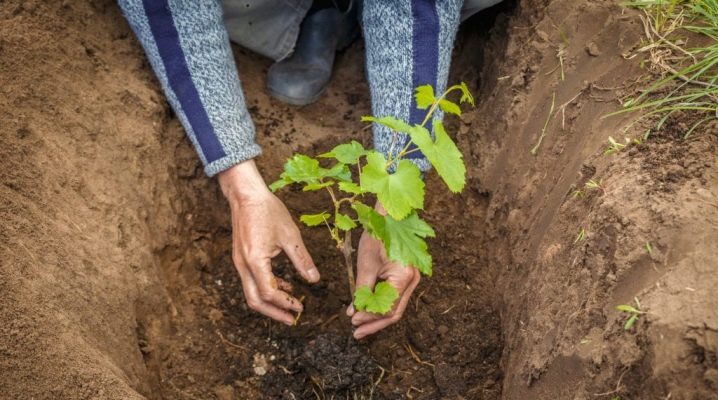
Sweet berries, great looks and relative ease of care are qualities that make grapes a desirable crop for many gardeners. The abundance of varieties allows you to choose a plant with ideal flavoring and other characteristics. However, in order for the crop to meet the expectations of the gardener, it is necessary to comply with certain requirements for planting and caring for a crop. This article will focus on transplanting grapes - about the basic rules of this procedure, various nuances and little tricks, thanks to which any person, be it an amateur gardener or an experienced gardener, can get a bountiful and sweet harvest.
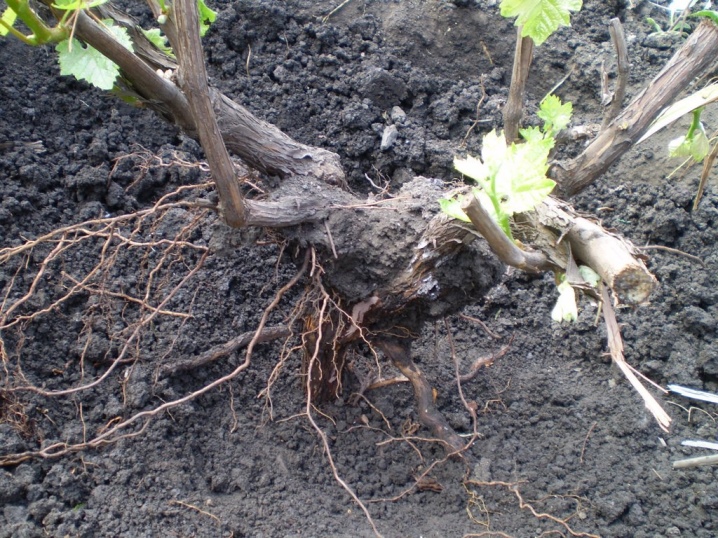
Timing
Grapes can be transplanted at any time of the year, but the best period is considered to be the beginning of spring, when the sap flow has not yet begun, or the end of autumn (in the period after the leaves fall and before frost), when the plant has already fallen asleep.
So, in spring, it is better to replant grapes in the 20th of April - in the first days of May. This is due to the fact that the plant has not yet awakened from hibernation, there are no buds and leaves on it, as well as the fact that the soil is already quite warm.
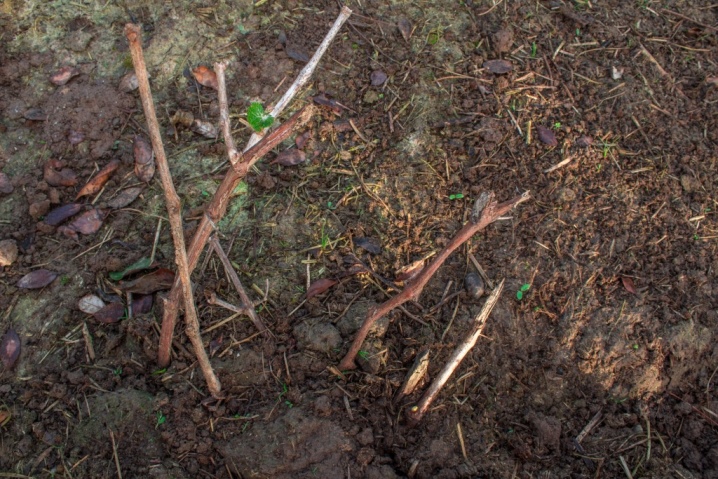
The most suitable warm months for grape transplanting are August and September.
Seat selection
It is better to choose a new place for planting grapes on a sunny, protected from strong winds area - this will help protect the bushes from damage, as well as increase the yield. Besides, the correct neighborhood with other plantings should be observed so that the plants do not overwhelm each other. It is also worth remembering that grapes are a perennial plant, so it is better to choose a place where the bush will grow for a long time (without the need for re-replanting).
Experienced gardeners advise against planting a plant in an area where another grape bush grew less than two years ago. If it is not possible to dig a hole in another place, then the land on the old one should be renewed, and a young seedling should be planted in the center of the hole itself by the transshipment method.
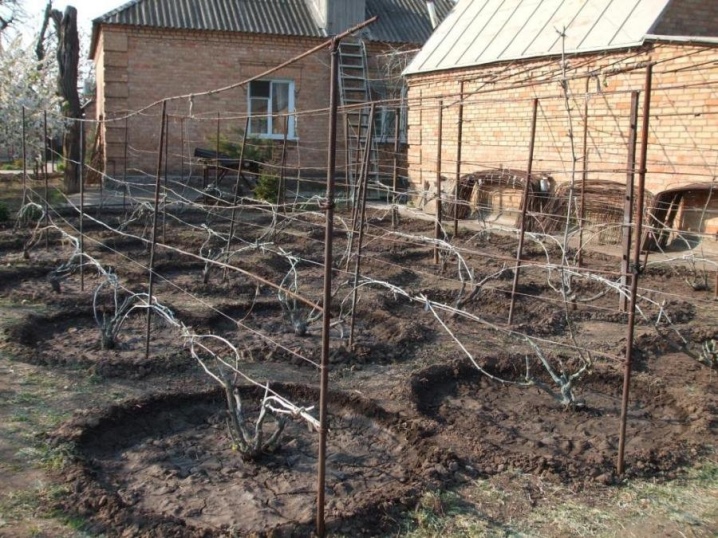
We take into account the age of the plant
Young seedlings 1-3 years old are ideal for transplanting. Experts do not recommend replanting adult bushes over 6 years old, because due to the highly developed cutting, there is a high probability that the plant will not take root in the new place. If the gardener needs to transplant such grapes, it is necessary to cut off part of the roots of the plant and leave the youngest ones, and then lightly process them with a mixture of clay and potassium permanganate.
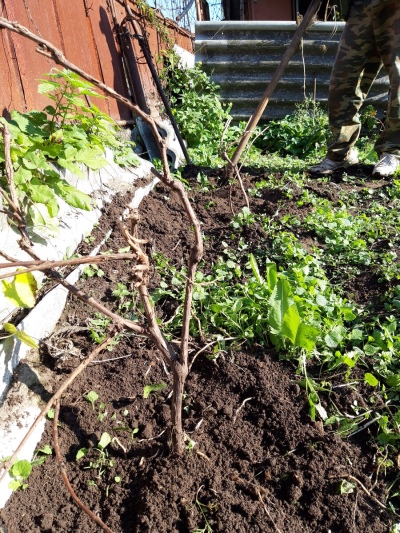
Transplant process
To transplant a grape bush to a new place, it must first be dug in within a radius of up to half a meter.
Adult bushes, which are more than 5-7 years old, should be carefully freed from the ground. After that, it is necessary to update the sections of the roots - to remove the old ones, leaving strong roots for two to three years. Then the roots are dipped in a solution of clay and potassium permanganate (if this is not done in advance, then at this stage it is necessary to cut out the extra stems, leaving 2 sleeves with 1-2 annual vines on each). The tops of the vines should be cut into 2-3 eyes, and the cuts should be treated with wax or garden decoction. After that, the grape bush is dragged to a prepared pit (this can be done with plywood or burlap), into which a bucket of water is poured (in the springtime it should be hot) and clods of clay are poured on the bottom of which, and above - fertile soil with gravel and sand ...
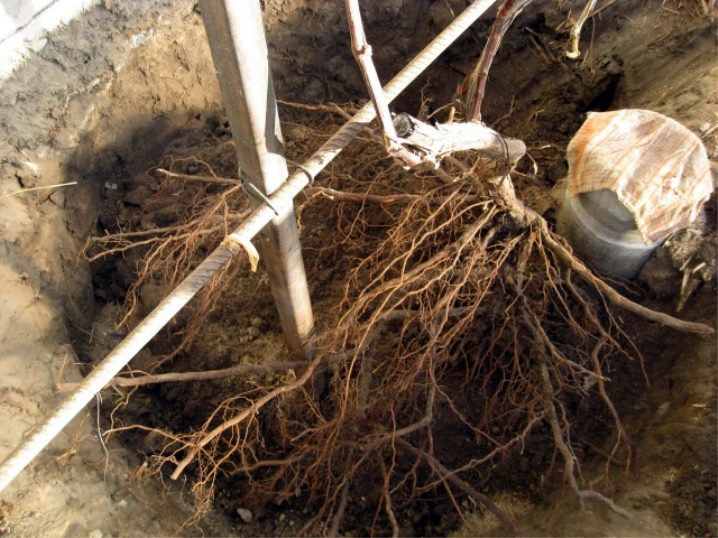
We must not forget that grape waste can only be added to the compost in the form of ash, as well as seeds and fermented pulp.
In order for the grape bush to take root better when transplanting to another place, a little barley seeds should be poured into the ground near the roots. If there is an iron deficiency in the soil, the plant needs to be fertilized in the future with iron-containing dressings. The bush itself should be laid in the hole at an angle along with the sleeves, directing the roots down, and then - after filling the hole with earth and removing the annual vine above the level of the hole - watered. To make watering more convenient, a piece of pipe should be installed along the edge of the pit.
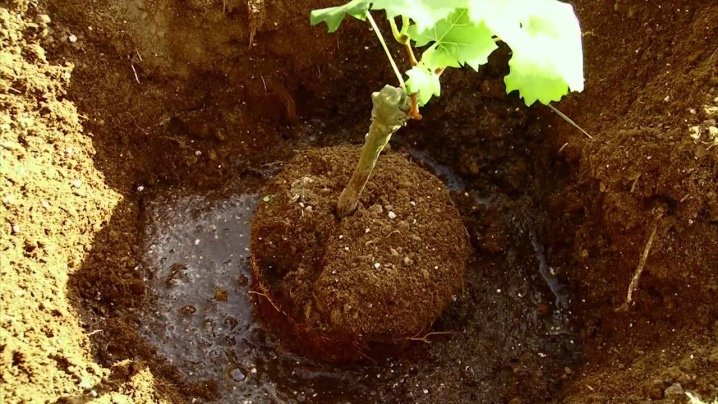
For winter and spring, the bush, as a rule, is covered with spunbond, and for autumn - with an air-dry coating. The plant can be transplanted not only during the period when it is sleeping, but this requires additional care of it. In order for the bush to recover after transplantation as quickly as possible, in the first year it is necessary to remove all inflorescences from it, and the next - only 1/3.
One of the ways to transplant a young grape bush (from 1 to 3 years old) is transshipment - with this method, the plant is transplanted with soil on the roots into a wide and deep hole. A couple of days before such an operation, the roots are not shortened, and the plant itself is not watered.
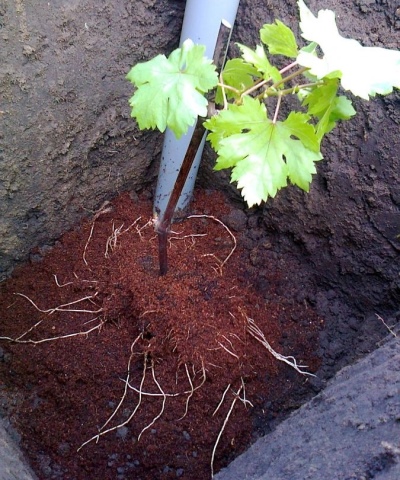
For old shrubs that are 10 to 20 years old and need replanting, a method called katavlak should be used, which is a method of vegetative propagation. Katavlak is carried out at the beginning of the spring season. It is necessary to dig a hole near the grape bush, then release the root system so that the heel roots are visible. After that, the vine is placed in a dug trench, and the young shoots are left on the surface. As a result of such actions, the bush begins to grow both in the old and in the new place. It should be noted that after transplanting with this method, fruiting begins already in the first year. The advantages of katavlak include the possibility of transplanting an adult plant if it grew chaotically before, as well as providing each vine with the necessary amount of sunlight.
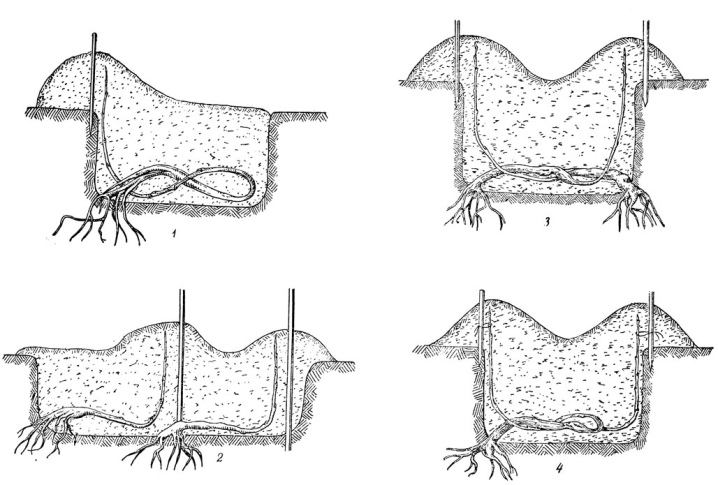
In order to neutralize the stress received by the grape bush during transplantation, as well as to speed up the process of restoring the root system, it is necessary to correctly organize watering, that is, to deliver water precisely to the heel roots of the plant. This can be done by laying a drainage layer of fine gravel inside the planting pit and placing a plastic or asbestos pipe in it at an angle, the upper part of which should rise 100–150 mm above the pit surface. Thanks to such a system, it is possible to implement directly root irrigation with a minimum risk of decay of the root system. In turn, this will lead to an increase in the rate of fruiting and an increase in the size of ripe berries.
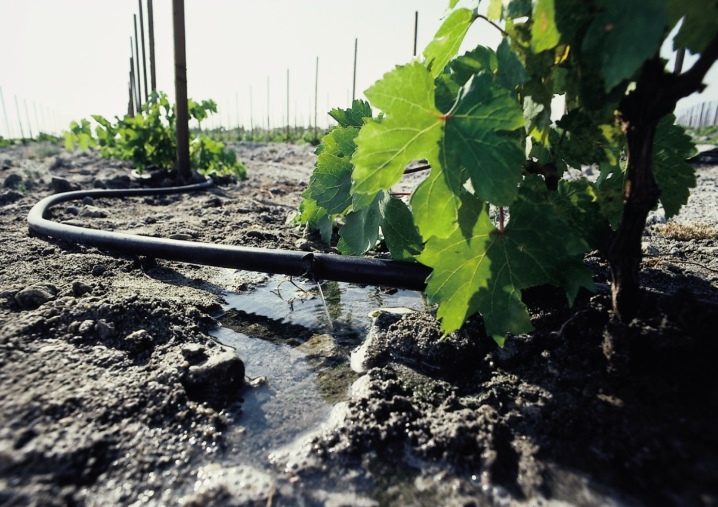
After the vines are transplanted, they should be watered once every two weeks, increasing the watering intervals over time. This schedule can be adjusted depending on weather conditions. Fertilizing transplanted bushes in the summer is only 2-3 times in three months. In addition, to ensure air circulation near the roots, it is necessary to loosen the soil from time to time.
Compliance with the above rules regarding the time of plant transplantation, the choice of location, as well as suitable methods will allow you to achieve high quantitative and qualitative indicators of the yield of grape bushes without any harm to them, as well as to plants that grow in the same area in the neighborhood.
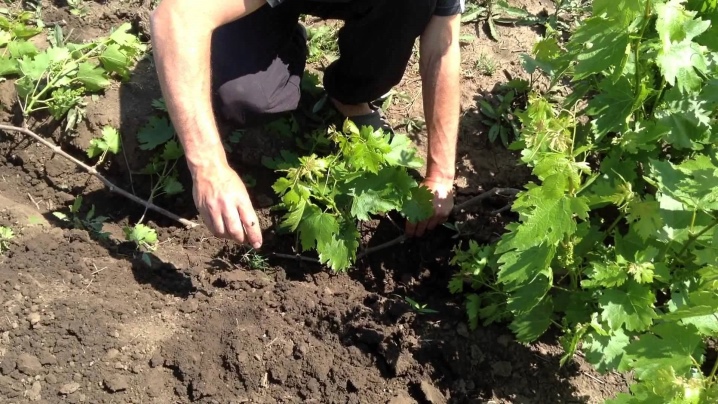













The comment was sent successfully.